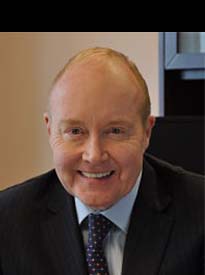
The Canadian wealth business has been shaped by three distinct waves. The first was the introduction of a wide spectrum of products and services on the dealer shelf, reflecting the changing needs and attitudes of aging investors and consumers’ greater sophistication. The second was stepped-up regulation, focused on improved know-your-client standards, conflicts of interest and greater transparency driven by the coming implementation of the client-focused reforms. Third was the steady adaption of new technologies, deepening client relationships through robo-investing and online advice, and improving the client-advisor interface.
The Canadian investment industry is now on the verge of another wave — the fragmentation of the wealth industry into new small and mid-sized dealers. This does not reverse the trend of consolidation from rising costs and stiff competition, but it does mitigate it. Until now, the Canadian wealth industry had not mirrored the structural evolution of the U.S. industry, with its dramatic disaggregation from the large integrated national-based dealers to small and mid-sized advisor firms following the restructurings and bankruptcies of the larger retail franchises during the global financial crisis. The recent uptick in new SRO-registered small advisory firms in Canada reflects several factors affecting the Canadian wealth business.
First, several third-party entities or agents — typically affiliates of an independent IIROC dealer with carrying broker services — have appeared to incubate new introducer firms and provide ongoing business support. These third-party entities provide advice and guidance for the set-up of the independent franchise and offer more sophisticated tools and technology for portfolio shelf selection, client documentation, compliance support and clearing/custodial services. Further, the third-party facilitators have profile and infrastructure in the marketplace to attract advisors to build critical mass of client assets, scaling up to lower unit costs. More recently, several independent asset managers have recognized the role of the dealer support mechanism to build and support a network of independent dealers to widen the distribution channel for managed fund investments. Aside from increased distribution potential, the wider demand for product may ease downward pressures on fees on managed product — and, as well, source alternative revenues through part-ownership of the small dealer network. Further, the larger independent IIROC dealers can similarly build a network of affiliate Type 2 introducers as a more cost-effective alternative to build existing infrastructure, given significant broker recruitment costs.
Second, the pace of ongoing structural adjustments to existing retail business models and the related change in the advisor community have stimulated existing advisors’ interest in looking for opportunities in new dealer start-ups. For example, the larger dealers have been driving down compensation through reduced pay-out schedules and minimum revenue thresholds to jettison poor-performing brokers and boost productivity and earnings. Further, these larger dealers have also restructured wealth operations to achieve greater efficiencies, segmenting high net-worth clients into private banking focused on discretionary management, and mass-market clients into financial advice and planning. As a result, conventional brokerage operations are sliced back, with less profile in the new retail paradigm.
Third, a wide range of analytical tools and a broad spectrum of sophisticated managed products offered through third-party entities may attract existing PM registrants to a new platform. PM registrants would be attracted to the shelf of investment products and related technology, complementing the option of internal discretionary management and giving them more scope for client relationships and potential cost savings through asset aggregation as additional PM registrants join the platform. A major business challenge, both for the PM and IIROC registrants, is to eliminate or mitigate the regulatory and technology barriers that complicate and obstruct the shift of client assets across different regulatory platforms.
Finally, impending regulatory changes will benefit the competitiveness of the small and mid-sized dealer. In particular, the Capital Markets Modernization Taskforce, the OSC’s burden reduction recommendations and proposals for SRO consolidation have suggested rule changes to lower the regulatory burden and reform the structure of the self-regulatory system. For example, IIROC’s proposals would permit IIROC and MFDA advisors to operate on a consolidated SRO platform, facilitating small Type 2 introducers to build client assets from mixed registrants on the platform and providing flexibility to MFDA Type 2 introducer firms to bolt onto an IIROC carrying broker. Further, IIROC should permit advisor incorporation, set under existing CRA tax precedents, to improve the economics and efficiencies of the Type 2 dealer, neutralizing the advantage of incorporated PMs shifting to a non-SRO introducer platform.
Regulators have put forward proposals to streamline the regulatory system for greater operating efficiencies and cost savings for all investment firms and encourage the start-up and expansion of small and mid-sized dealers, which are vital to capital formation and broader access to retail services for the investing public. A close focus on the recent structural trends underway in the investment industry may suggest direction of further reforms to improve efficiencies of the wealth business.
